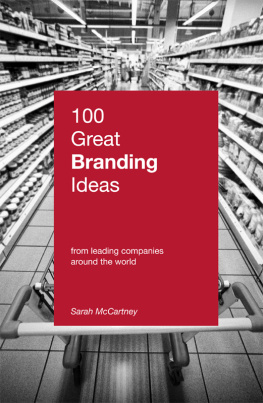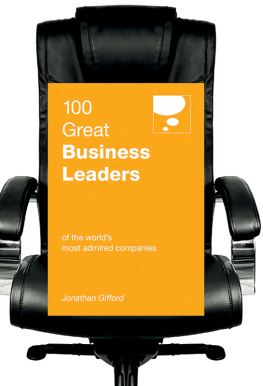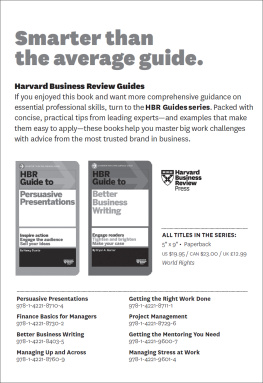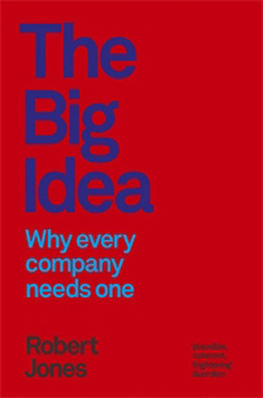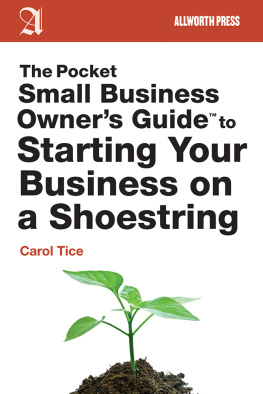GREAT
COST-CUTTING
IDEAS
FROM LEADING COMPANIES
AROUND THE WORLD
Anne Hawkins
Copyright 2010 Anne Hawkins
Cover art: Opal Works Co. Ltd.
First published in 2010 by Marshall Cavendish Business
An imprint of Marshall Cavendish International
PO Box 65829
London EC1P 1NY
United Kingdom
and
1 New Industrial Road, Singapore 536196
genrefsales@sg.marshallcavendish.com
www.marshallcavendish.com/genref
Other Marshall Cavendish offices: Marshall Cavendish International (Asia) Private Limited, 1 New Industrial Road, Singapore 536196 Marshall Cavendish Corporation. 99 White Plains Road, Tarrytown NY 10591-9001, USA Marshall Cavendish International (Thailand) Co Ltd. 253 Asoke, 12th Flr, Sukhumvit 21 Road, Klongtoey Nua, Wattana, Bangkok 10110, Thailand Marshall Cavendish (Malaysia) Sdn Bhd, Times Subang, Lot 46, Subang Hi-Tech Industrial Park, Batu Tiga, 40000 Shah Alam, Selangor Darul Ehsan, Malaysia
Marshall Cavendish is a trademark of Times Publishing Limited
The right of Anne Hawkins to be identified as the author of this work has been asserted by her in accordance with the Copyright, Designs and Patents Act 1988.
All rights reserved
No part of this publication may be reproduced, stored in a retrieval system or transmitted, in any form or by any means, electronic, mechanical, photocopying, recording or otherwise, without the prior permission of the copyright owner. Requests for permission should be addressed to the publisher.
The author and publisher have used their best efforts in preparing this book and disclaim liability arising directly and indirectly from the use and application of this book.
All reasonable efforts have been made to obtain necessary copyright permissions. Any omissions or errors are unintentional and will, if brought to the attention of the publisher, be corrected in future printings.
A CIP record for this book is available from the British Library
ISBN 978-981-4312-74-5
Printed and bound in Great Britain by
TJ International Limited, Padstow, Cornwall
CONTENTS
Acknowledgments
My thanks go to the members of Cheltenham Connect Skillspace for their support and contributions, and in particular to Belinda Wilson (GlosJobs.co.uk); Pia Cato (Vanilla Pod Bakery); Jonathan Pollinger (Intranet Future); Mike Reed (REEL Solutions); Jonathan Moffitt (Auditel); Anthony Salloum (Comsal) and Karen Wilson (Colour Matters Decorating and Interiors).
Neil Radbourne and Adrian Hughes are also to be thanked for their contribution of ideas. Others enthusiastic to share their experiences but understandably unwilling to disclose their identities include Trevor, Paul, Andy, Lesley, Steve, Stephanie, Brian, Jeremy and Jacqueline.
Last, but by no means least, my thanks to my husband Steve, without whose tales of trials and tribulations this book would not have been possible.
Anne Hawkins
INTRODUCTION
WHY ARE YOU reading this book?
Dont get me wrong, Im delighted youre doing so.
But I hope you havent picked it up expecting to find 100 great ideas all about how to slash the amount you spend.
Is that all youre looking for?
Arent you really interested in improving your profit and, more importantly, your profitability? (If you work for a charity or another not-for-profit organisation, dont worry, this book is also for you. After all, youre just as interested in making every 1 you can raise achieve as much as possible, so theres plenty in here for you as well.)
You see, there is a difference in scope.
If you restrict yourself to just finding ways to reduce your costs, you overlook the opportunity to use the costs you do incur more effectively to increase your sales and thereby improve your bottom line. So Id politely suggest its not really costs youre interested in as such, its improving your profit.
And please dont stop there.
If you were offered the opportunity to invest in a business that guaranteed you a profit of 1,000 this year, would you be interested? Anything else you might want to know before making up your mind? Besides the obvious matters of risk and legality there is the key question of how much you have to invest to earn that profit. If you had to invest 10,000 you could well be interested. If you had to invest 1m you would walk away. So actually what really matters to you is not how much profit you make but how much profit you make relative to how much had to be invested to earn that profit i.e. profitability.
So I suspect weve now established that its not just improving your profit that youre interested in, its really profitability. Take a look at for an explanation of how you go about improving your profitability and the opportunities for tapping into the multiplier effect.
And while Im at it, I may as well point out that many profitable businesses go into liquidation because they run out of cash. Really? (If youre not sure about how this can happen take a look at .) Perhaps youd also like some ideas on how to keep cash flowing into the business so that youre around long enough to enjoy your profits?
It might be helpful at this stage to point out a few not-so-great ideas.
Anxious to improve the financial performance of his division, this manager took me to one side and asked, Do you think if I account for my costs in a different way my products will be more profitable? I gently pointed out that if he managed his costs better and/or improved his sales, his products would become more profitable. After all, its not about how you cut the cake... its the size of the cake youre cutting.
Lured by the apparent savings to be made by sub-contracting work, this other business, unable to do anything with the released capacity, ended up paying not only their own business costs but also those of their supplier. (This ones actually worthy of further thought. Although it results in increasing your costs in the short-term, it might not be quite so daft as it sounds. Intrigued? You might like to start with .)
Beware the quick fix where, with sleight of hand, your costs improve only to reappear as soon as your backs turned. Using rogue consultants to help you take stock out of your business can be a great example of this (see ). Look for root causes and come up with proper fixes dont just put out the fire, take away the matches.
You see, when it comes down to it there are only 3 ways to improve the financial performance of your business:
reduce the costs you incur while maintaining the amount you sell
increase the amount you sell without proportionately increasing your costs
reduce the amount of investment needed to do the same amount of business
So here are 100 ideas to get you started.
THE IDEAS
THE IDEAS ARE garnered from personal experience, straightforward good business practice and from a range of contacts in a wide spectrum of businesses (from multinationals to sole traders), with the emphasis on practical steps you can take.
While the intention is that you dip into the book for inspiration, links are provided to help you thread your way through the ideas should you want more about particular themes.





